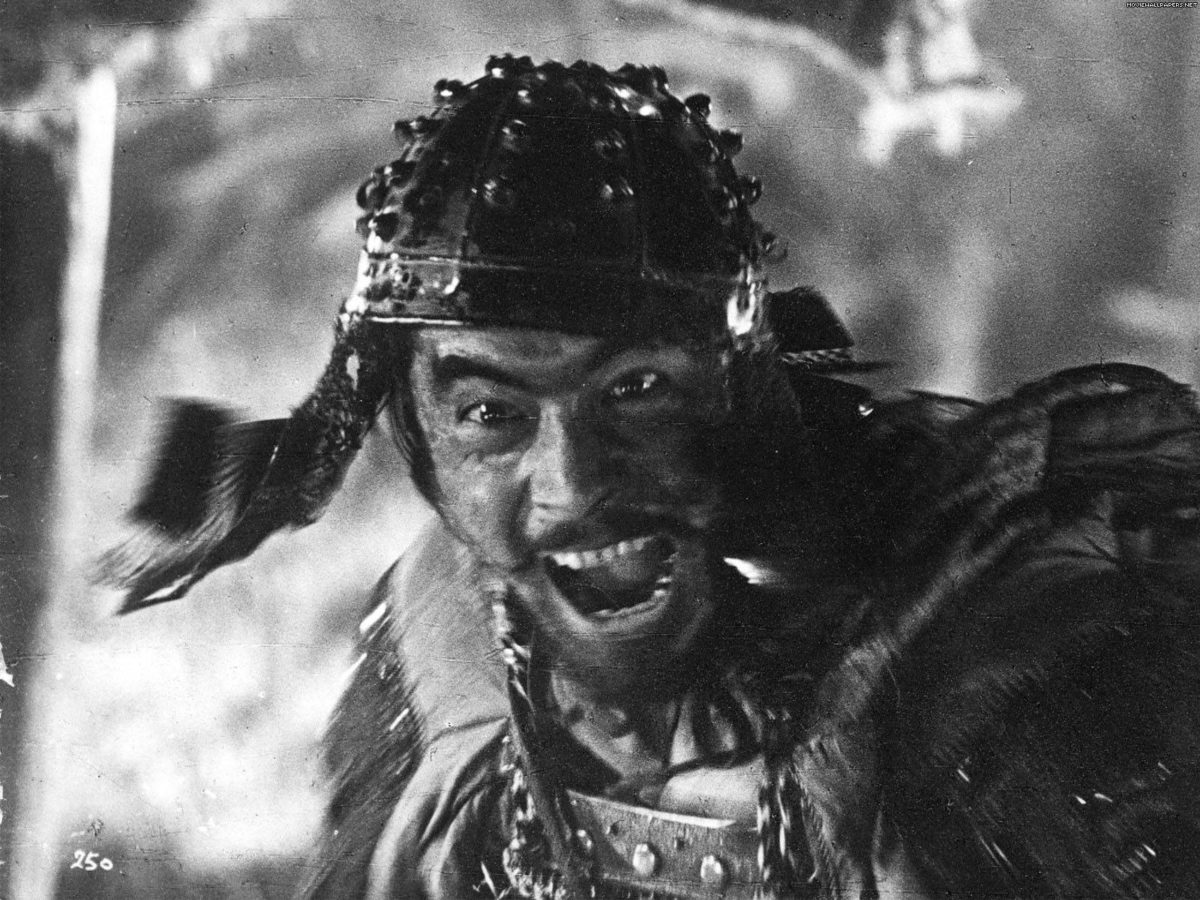Roger Ebert – Great Movie Review – 2001:
A farming community learns that the upcoming harvest will result in a raid by a group of thieving bandits. An outspoken worker suggests that they should go to the nearest town and find a group of warriors who will protect them and help them defend their land…
Wait a second, I think I accidentally put A Bug’s Life into the DVD player instead of Seven Samurai… Sorry about that, I’m always getting those two confused. Obviously, I’m not saying that A Bug’s Life is a remake of Seven Samurai, but there is no doubt that it borrows some of its basis for a story on this original ensemble battle film, as did:
 The Guns of Navarone (1961)
The Guns of Navarone (1961)
The Magnificent Seven (1960)
The Good, The Bad, and The Ugly (1966)
Bonnie and Clyde (1967)
The Dirty Dozen (1967)
The Wild Bunch (1969)
Close Encounters of the Third Kind (1977)
Battle Beyond the Stars (1980)
The Road Warrior (1982)
Die Hard (1988)
Ronin (1998)
Saving Private Ryan (1998)
The 13th Warrior (1999)
The Phantom Menace (1999)
Three Kings (1999)
Ocean’s Eleven (2001)
The Inglorious Bastards (2009)
Clearly, this Akira Kurosawa masterpiece tapped into a concept or trope that was so simple it could be the basis for kids movies, westerns, and space comedies. It is the universal desire to see the strong protect the weak and the fact that with a varied group of warriors, we can each find our own place in the story. But just because Kurosawa did it first, does that necessarily mean that this movie is great? Why has this 3 hour and 27 minute epic held the attention of the cinematic community for over 60 years. Why is this movie regarded as highly as it is? Well, let’s recount the basics of the story’s theme along with some character analysis, then we’ll look at Kurosawa’s skill as a director which I believe sheds some light on what makes this film shine after 60 years of imitators have tried to recreate its charm, power, and craftsmanship. Continue reading Seven Samurai (1954)

 There is almost too much to say about these three films. In fact, only one film in the trilogy actually made it onto the IMDB Top 250 list, that being the final film, Red. Although these are each excellent as stand-alone works, they are best when seen as a whole. For that reason, I am going to review each of them separately. For the unfamiliar, Polish director Krzysztof Kieslowski’s last work, “Three Colors Trilogy” takes its name from the colors of the French flag and its themes from the ideals represented by those colors: blue (liberty), white (equality), and red (friendship).
There is almost too much to say about these three films. In fact, only one film in the trilogy actually made it onto the IMDB Top 250 list, that being the final film, Red. Although these are each excellent as stand-alone works, they are best when seen as a whole. For that reason, I am going to review each of them separately. For the unfamiliar, Polish director Krzysztof Kieslowski’s last work, “Three Colors Trilogy” takes its name from the colors of the French flag and its themes from the ideals represented by those colors: blue (liberty), white (equality), and red (friendship). Blue, the first of the trilogy, takes place in Paris. It stars
Blue, the first of the trilogy, takes place in Paris. It stars  Because of its name, Blue, you can’t help but look for that color in the film’s carefully crafted images. With his expert usage of color, Kieslowski has forced the audience to pay attention to the slow-moving story that is unraveling on the screen. The most noticeable visual technique would be the odd fade-out/fade-ins that occur four times in the film. At each of the four points, Julie is at a crossroads, having to decide whether to push back the memories of her life before the accident, or to acknowledge them.
Because of its name, Blue, you can’t help but look for that color in the film’s carefully crafted images. With his expert usage of color, Kieslowski has forced the audience to pay attention to the slow-moving story that is unraveling on the screen. The most noticeable visual technique would be the odd fade-out/fade-ins that occur four times in the film. At each of the four points, Julie is at a crossroads, having to decide whether to push back the memories of her life before the accident, or to acknowledge them. At one point, she immerses herself completely and stays underwater for as long as possible. But soon, she has to come up for air. In the same way, Julie can’t help but re-establish the connections with her past, and like the continent upon which she resides, she shifts from a state of liberty into a state of union. She gives the family home to her husband’s mistress’, completes her husband’s unfinished composition, and even builds a relationship with Olivier.
At one point, she immerses herself completely and stays underwater for as long as possible. But soon, she has to come up for air. In the same way, Julie can’t help but re-establish the connections with her past, and like the continent upon which she resides, she shifts from a state of liberty into a state of union. She gives the family home to her husband’s mistress’, completes her husband’s unfinished composition, and even builds a relationship with Olivier.